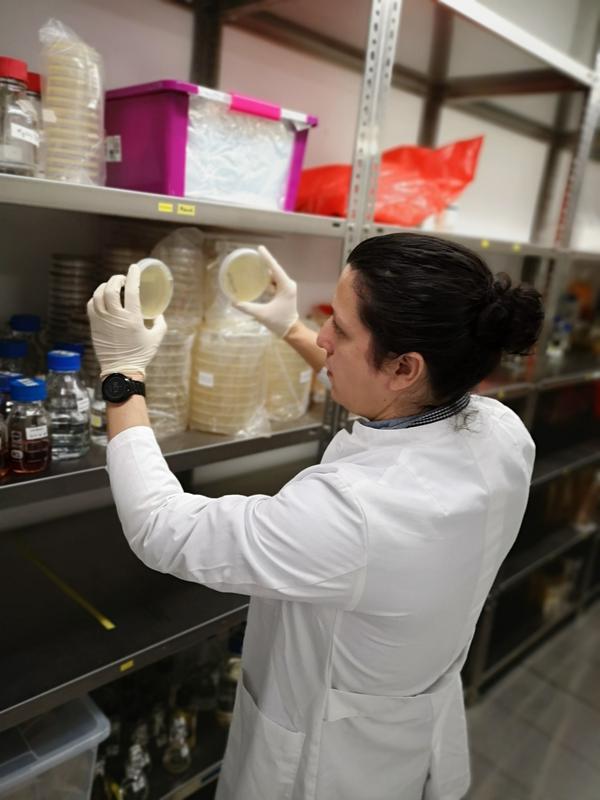Researchers track down new biocatalysts

Scientist examines bacterial growth after phytase screening. Photo: G.A. Castillo Villamizar
Enzymes such as phytases and phosphatases are required to be able to use organically bound phosphate. The research group led by Professor Rolf Daniel from the Institute of Microbiology and Genetics at the University of Göttingen develops standardised methods to isolate novel phosphatases and phytases from complex environmental samples.
“The phytases currently used commercially originate from the cultivation of individual strains of microorganisms,” says Daniel. “This is a waste of potential for the development of new, more effective processes through the use of improved enzymes.”
Phosphates are used as fertilisers in large quantities in conventional agriculture. The increasing depletion of natural phosphorus resources and the pollution of phosphorus deposits with heavy metals make new strategies for the extraction and recycling of phosphates more urgent.
The new method is based on the screening of specially constructed gene libraries from the entire gene pool of organisms in different habitats. The researchers take samples from sediments and soil and clone the total DNA. They then observe which activities develop in these gene libraries.
An innovative screening method is used in which phytate serves as a phosphate source. This enabled the researchers to identify the largest variety of phosphatases and phytases ever obtained using functional metagenomics, including new phytase subtypes with hitherto completely unknown functional groups and new properties.
Phosphatases and phytases are natural biocatalysts that play a central role in many metabolic processes and contribute to the release of organically bound phosphate. Phytases are specialised in the degradation of phytates found in cereals and many other plants.
They are already used in the animal feed industry as a feed additive to prevent the phosphate naturally contained in plant food from passing unused through the intestines when feeding non-ruminants such as pigs or poultry. Phytases in particular are therefore considered to have great market potential.
Professor Rolf Daniel
University of Göttingen
Department of Genomic and Applied Microbiology
Grisebachstraße8
37077 Göttingen, Germany
Phone: +49 551 39-33827
E-ail: rdaniel@gwdg.de
Internet: http://www.uni-goettingen.de/en//318960.html
Genis Andrés Castillo Villamizar et al. Functional Metagenomics Reveals an Overlooked Diversity and Novel Features of Soil-Derived Bacterial Phosphatases and Phytases. mBio 2019. https://doi.org/10.1128/mBio.01966-18
Media Contact
All latest news from the category: Life Sciences and Chemistry
Articles and reports from the Life Sciences and chemistry area deal with applied and basic research into modern biology, chemistry and human medicine.
Valuable information can be found on a range of life sciences fields including bacteriology, biochemistry, bionics, bioinformatics, biophysics, biotechnology, genetics, geobotany, human biology, marine biology, microbiology, molecular biology, cellular biology, zoology, bioinorganic chemistry, microchemistry and environmental chemistry.
Newest articles

Sea slugs inspire highly stretchable biomedical sensor
USC Viterbi School of Engineering researcher Hangbo Zhao presents findings on highly stretchable and customizable microneedles for application in fields including neuroscience, tissue engineering, and wearable bioelectronics. The revolution in…

Twisting and binding matter waves with photons in a cavity
Precisely measuring the energy states of individual atoms has been a historical challenge for physicists due to atomic recoil. When an atom interacts with a photon, the atom “recoils” in…

Nanotubes, nanoparticles, and antibodies detect tiny amounts of fentanyl
New sensor is six orders of magnitude more sensitive than the next best thing. A research team at Pitt led by Alexander Star, a chemistry professor in the Kenneth P. Dietrich…





















